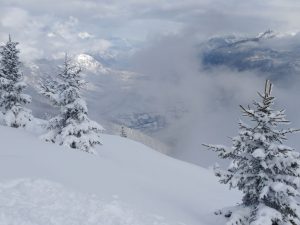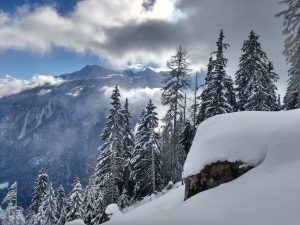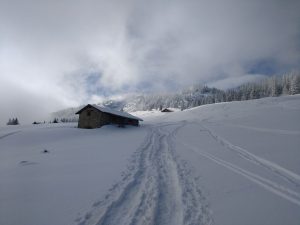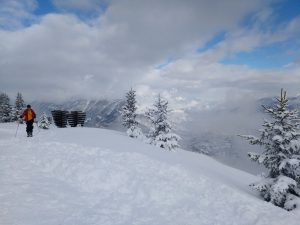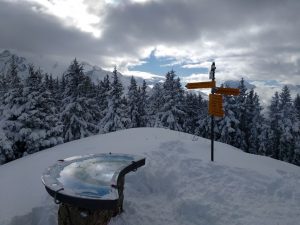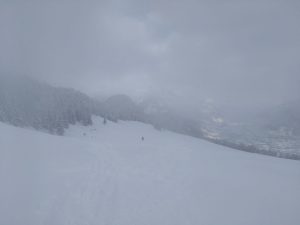Mont de l’Arpille
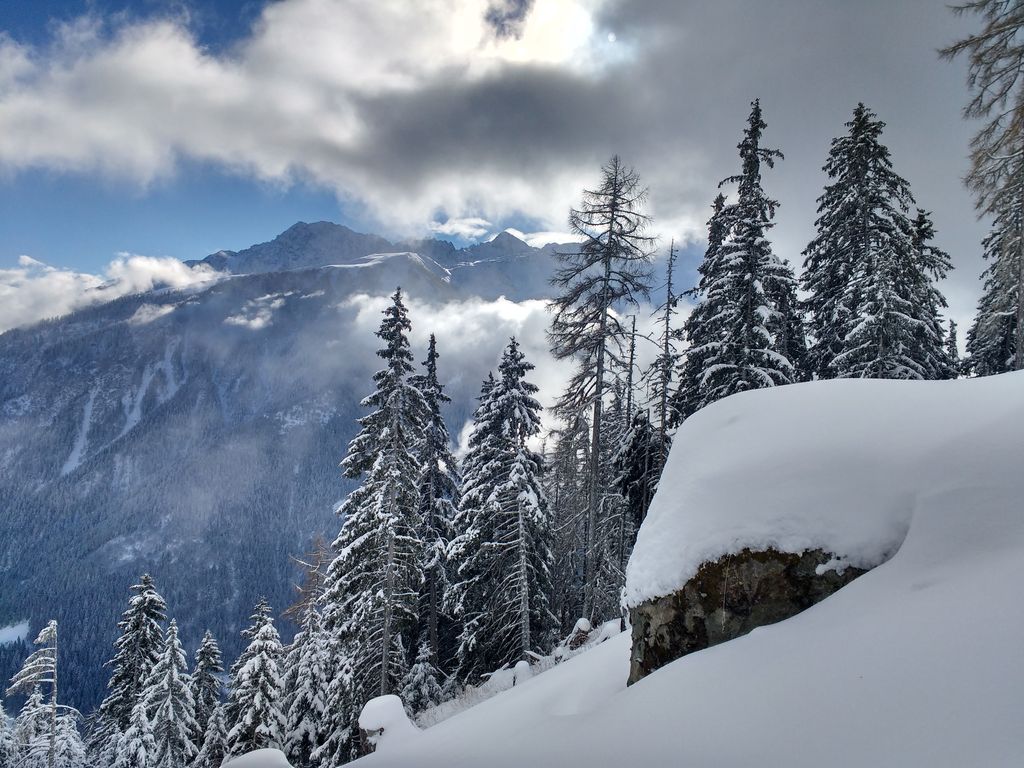
Few ski tours are safe enough to do when the avalanche risk is a high four out of five. Mont de l’Arpille is one of those that can be a possibility. The mountain rises to a height of 2085 metres, which is quite modest in the region. It is just to the north of the Col de Forclaz, which separates Martigny in Switzerland from Chamonix in France. From the summit, there is a panoramic view from the peaks of Mont Blanc and the Chamonix Aiguilles to Verbier, Martigny and the Rhone Valley.
I was in Chamonix for two days when the snow arrived this year. After a day skiing powder from the La Tour lifts, I was keen to get out and do a ski tour on my second day. There was a high avalanche risk ruling out most local tours, so we drove over to Switzerland for this route which mostly covers rolling meadow terrain on shallow gradients.
Mont de l’Arpille Ascent
The route starts near the village of Ravoire, with several parking spots being possible in the hamlets above the village. It is a popular area for snowshoers, and there is a marked snowshoe track all the way to the summit. On skis, it is easiest to follow the same route for most of the ascent, zig-zagging up through thick fir trees to reach the wide, gentle north ridge of the mountain. This is followed along its eastern side through sparsely wooded meadows and pastures.
A little way below the summit sits the farming hamlet of Arpille. This is a typical alpage collection of a few stone buildings with no road access. Usually these hamlets are deserted in winter, but today we saw smoke rising from one of the chimneys and two pairs of skis leaned against the outside of the building, so at least one of the buildings was in use.
From Arpille hamlet, the route heads west to gain the more pronounced summit ridge. This section has a steeper climb which winds through trees to a small col by the lower north summit. From here, a short walk along the ridge leads to the main summit and the viewpoint. Despite the gentle angled ascent, the summit area is littered with avalanche barriers. These protect the roads below from accumulations on the steeper south and east faces of the mountain.
Descent
The ski down from the summit is not that challenging, but it is a delightful descent through trees and meadows. Since we chose the route as a safe option after heavy snowfall, we had plenty of light, fluffy powder to ski through on our descent. There are some steeper options at the start and finish of the route if conditions are a little more stable.

